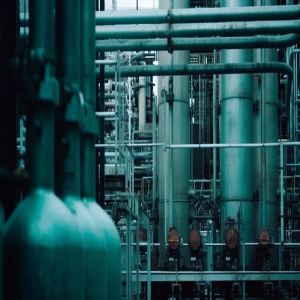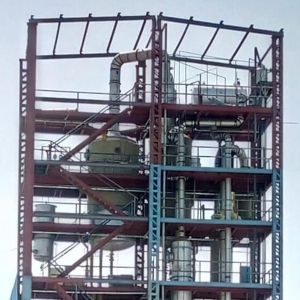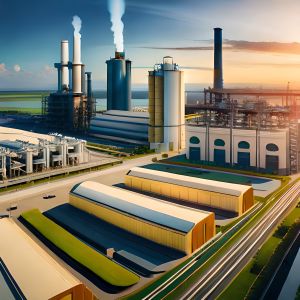Park Street, Kolkata, West Bengal
- GST NO. : 19AARCM1536F1Z9
Biodiesel Plant
| Business Type | Manufacturer, Exporter, Supplier |
| Driven Type | Electric |
| Automatic Grade | Automatic |
| Application | Bio Diesel Processing |
| Click to view more | |
Preferred Buyer From
| Location | Worldwide |
Product Details
As we know, Biodiesel is the renewable alternative to petroleum-based High-Speed Diesel (HSD) that we widely use in our cars as fuel. Fat from vegetable and animal sources exists in the form of triglyceride (one form of ester), which, despite having comparable calorific value, is not suitable for direct use as motor fuel due to its higher viscosity, poor combustion & cold flow properties. Alteration of its molecular structure, as we call it Transesterification, of such fat came up as the only solution to unleash its goodness other than human consumption. Fatty Acid Methyl Ester (FAME), the scientific name of Biodiesel, is the substance that is achieved by the process of such Transesterification.
Various chemical processes are practiced worldwide to make the process happen :
- Heterogeneous Base Catalytic Transesterification.
- Heterogeneous Acid Catalytic Transesterification.
- Homogeneous Base Catalytic Transesterification.
- Homogeneous Acid Catalytic Transesterification.
- Enzymatic Transesterification.
This nomenclature is based on the type of catalyst used in the chemical reaction process adopted. Amongst them, Homogeneous Base Catalytic Transesterification wins the fight and emerges as the industry standard due to its several advantages over the other ones with respect to reaction time, temperature, and, most importantly, the economy.
Now, even if we come this far in choosing the most suitable reaction process, the quest does not stop here. By virtue of its being an industrial chemical process in a Biodiesel plant, it entails a number of unit processes and unit operations going into shaping the final product with the desired quality and without compromising on the process economy. Three sections where we can do engineering and optimization are
Preprocessing of Feed
Transesterification.
Washing & Refining.
Preprocessing of Feed :
- It is often underrated but has a great influence over the processes forward. At the same time, the type and quality of feed dictate the design of the preprocessing unit. Feed with low FFA content (<3%) gets by only with screener and homogenizer assembly as no unit process happens at this stage. This operation aims at rendering the best possible homogeneous feed without any particulate impurity fit for Transesterification.
- Conversely, Feeds with high FFA content (>3%) are not fit for direct Transesterification to be parsed through, as the containing FFA begets soap, the most undesirable outcome, affecting the reaction stoichiometry adversely to result in incomplete Transesterification. Here comes two choices - to get rid of the FFA content and bring down its concentration below the permissible limit or to transform the FFA to triglyceride (one form of ester). Now, the feed is ready for the next step.
- Backed by decade-long research data, we have mastered the science of designing the preprocessing unit that suits the feed available in your locality. Ours is a unit that personifies engineering excellence in terms of both space and cost optimization without compromising on the quality of output. As one of the leading biodiesel plant manufacturers, we work on the principle called co-creation, in which we continuously collect operational data from existing plants and then implement meaningful fine-tuning in the next product we release based on that data processing.
Transesterification :
- The core of the whole process line happens inside a vessel called the reactor, which plays the most important role in FAME production, be it its quality, quantity, or cost optimization. Without exception, we also adopt the same type of Transesterification technology, i.e., Homogeneous Base Catalytic Transesterification, to run our modular batch reactor, which exemplifies our specialization in designing one of the finest reactors available across the industry. For the days of toiling, our primary focus used to be obtaining the highest-ever possible reaction conversion along with the lowest residence time, which we eventually achieved to stay extremely relevant to the industry.
- Another useful aspect of such optimization is observed in the next process of washing and refining going forward. The design of the reactor defines the challenges we are going to put on the next step, be it the extent of atomization of glycerol, soap, water formation, and most importantly, the undesirable intermediate products, such as mono/dy/tri-glyceride content in the Biodiesel. Now, the effort put into crafting such an engineered reactor started making sense.
Washing & Refining :
It is paradoxical why most of us don't pay equitable heed to this section because this section holds the key to enhancing the look & feel and the acceptability to different standards (BIS, ASTM, EN, etc.), no matter what kind of Biodiesel the reactor spits out. What we get from the outlet of the reactor is crude Biodiesel, a mixture of FAME, Glycerol, and loads of undesirable other impurities. An equipped biodiesel plant in India makes sure that the technology is capable of refining the crude Biodiesel and making it industry-ready.
Crude Biodiesel has to be parsed through several unit processes and operations to make the final output FAME be accepted as the standard B100.
Looking for "Biodiesel Plant" ?
Explore More Products






